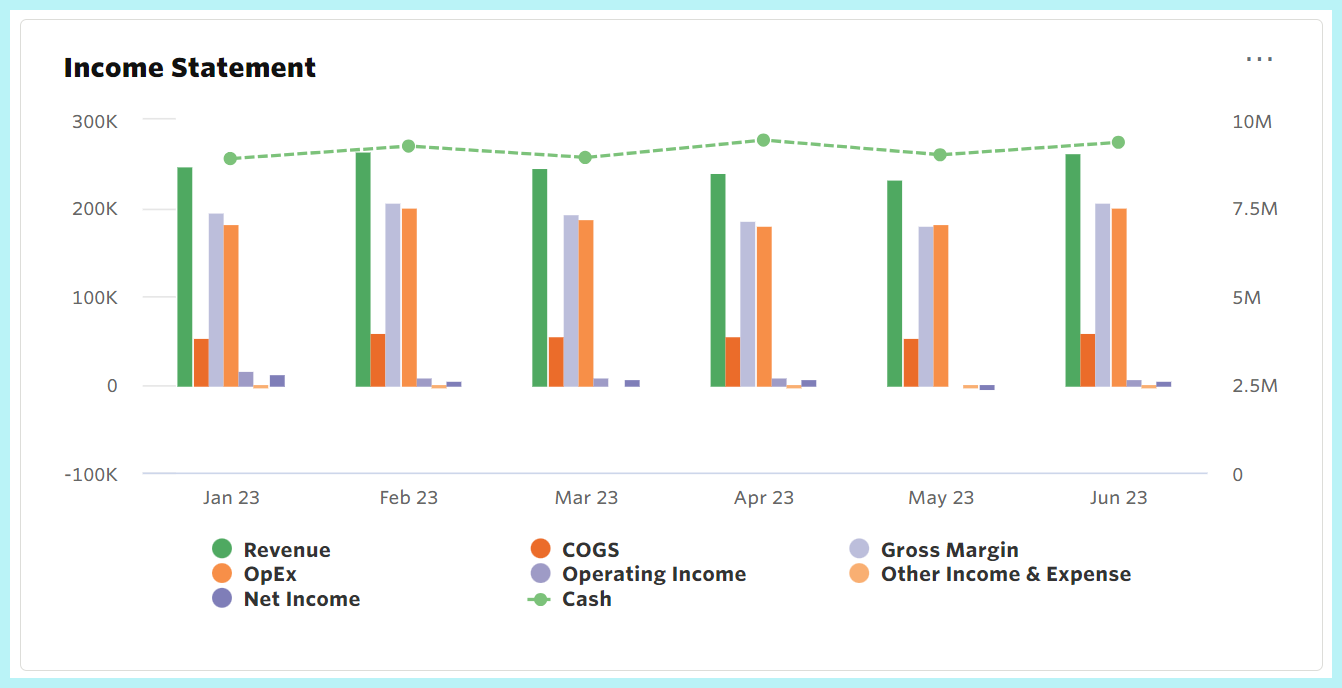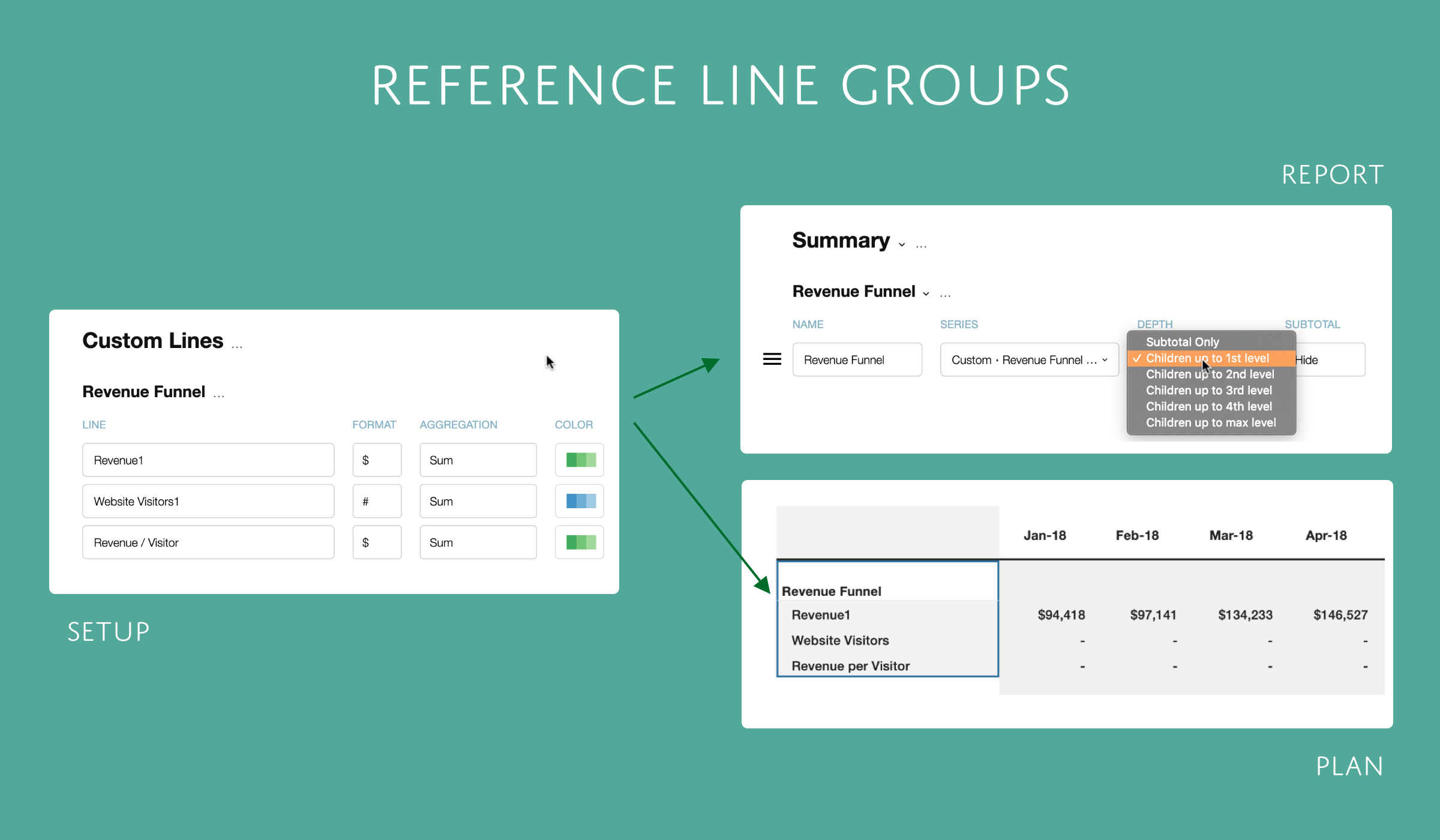"Top line" and "bottom line" are terms often used in financial planning that both guide decision-making, analyze performance, and offer a comprehensive glimpse into a company's financial health. These two fundamental metrics provide an overview of an organization's revenue and profitability; they play an integral role in analyzing financial performance and potential for growth, as well as informing decision-making for how organizations strategize, grow, and sustain themselves in a competitive marketplace.
This article will examine the basic distinctions between the top line and the bottom line and explore their significance, calculation methods, and implications for businesses of all sizes.
Top Line
Top line, or "top-line growth," guides companies toward expansion, market share gain, and enhanced market presence.
The top line represents the total revenue generated by a company from its core operations. It includes revenue earned through the sale of goods or services before accounting for any deductions or expenses. Top-line growth is a measure of a company's ability to attract customers, penetrate new markets, and increase market demand for its offerings – all of which play a significant role in strategic budgeting decisions.
In summary, top-line growth identifies a company's revenue generated from core operations, serving as a measure of an organization's market success, competitiveness, and ability to captivate customers.
How to Calculate Top-Line Growth
Top-line growth is relatively straightforward to calculate – It’s derived by comparing the revenue of a specific period, usually one year, with the revenue from a previous period.
Top-Line Growth = (Revenue in Current Period - Revenue in Previous Period) / Revenue in Previous Period × 100
Bottom Line
Closely associated with net income, profit, or earnings, the bottom line evaluates a company's financial performance and its capacity to yield profits.
 A Jirav dashboard showing Income Statement with revenue, cogs and more
A Jirav dashboard showing Income Statement with revenue, cogs and more
At its core, the bottom line includes the residual profit a company generates after deducting all costs, expenses, and taxes from its total revenue. This net profit reflects the true earnings that a business retains for its shareholders, reinvests in its operations, or uses to service debts. The bottom line essentially answers the question: "How much money is left for the company after covering all financial obligations?"
How to Calculate Bottom Line
Since the bottom line is often used interchangeably with net income or net profit, it involves subtracting all expenses, taxes, and interest from the total revenue generated by a company's core operations. Bottom-line analysis is key for financial forecasts, because it represents the amount of money left over after all costs have been deducted.
The formula for calculating the bottom line is as follows:
Bottom Line (Net Income) = Total Revenue - Total Expenses - Taxes - Interest
Industry Examples of Top Line and Bottom Line
While both the top line and the bottom line are important measures of a company's financial performance, they focus on different aspects of its operations and can be used differently in various industries. Here are some examples illustrating the differences between the two metrics:
Life Sciences
In the life sciences industry, the top-line metric is particularly valuable when assessing the commercial viability of new medical treatments or pharmaceutical products. Companies can use top-line growth to track the revenue generated from the sales of these treatments, indicating their acceptance and demand in the healthcare market. However, when considering complex drug discovery processes, clinical trials, and regulatory approvals, the bottom-line metric helps evaluate the viability of new medical advancements. Companies can gauge the profitability of their innovations and make informed decisions regarding resource allocation, further research, and potential partnerships.
For instance, a pharmaceutical company that sells prescription drugs, over-the-counter medications, and medical devices would use the top-line figure to calculate cumulative sales revenue from all these products. On the other hand, the bottom-line figure – that pertains to Net Income – would involve deducting various expenses like research and development costs, manufacturing expenses, and marketing costs from the total revenue. The resulting value is the net profit earned by a biotechnology company in a specific period, which gives a more accurate picture of its financial health.
SaaS
For SaaS companies, top-line growth is crucial in evaluating the adoption and scalability of their software solutions. SaaS providers can monitor top-line growth to understand how effectively their subscription-based services are attracting new customers and retaining existing ones. Within the SaaS sector, the top-line figure is often referred to as Annual Recurring Revenue (ARR). For a cloud-based software company that provides subscription-based services, ARR represents the total contracted recurring revenue from these services over a year.
Meanwhile, the bottom-line figure, Net Operating Income, is derived after considering costs like development, customer support, and server maintenance. This figure showcases the actual profit generated by the SaaS company from its software services. By deducting expenses related to product development, customer support, and infrastructure from total revenue, SaaS businesses can determine the true profitability of their offerings. The bottom-line metric aids in optimizing pricing strategies, enhancing customer experiences, and driving sustainable growth in a highly competitive market.
Investment Management
For the investment management industry, the top-line figure is typically denoted by Management Fees; these are generated by an investment management company through the percentage fee they charge based on the Assets Under Management (AUM) managed on behalf of its clients. The top-line metric is vital for assessing the growth of an investment company’s portfolio of investments. Investment firms can utilize top-line growth to track the total value of investments, demonstrating their ability to attract new investors.
The bottom-line figure is calculated after deducting costs like salaries and wages, travel, reporting and audit support, and other operational costs. This figure provides insights into net proceeds generated by the investment management company. Investment management firms rely on this metric to evaluate whether they charge sufficient fees to cover the costs of managing the funds on behalf of investors. By calculating the bottom-line metric, you can make informed decisions on the fees that are charged to investors and ongoing profitability throughout the management of the investment.
Consumer Packaged Goods/eCommerce
Top-line growth plays a significant role in the CPG and eCommerce sectors, especially when analyzing consumer trends and market demand. Companies can use this metric to monitor the sales revenue of their products, revealing the effectiveness of marketing campaigns, product launches, and customer engagement strategies. Top-line growth aids in understanding shifts in consumer preferences; identifying high-performing product categories; and optimizing inventory management. In the CPG and eCommerce sectors, the top-line figure is Gross Merchandise Volume (GMV). For example, in an eCommerce platform, GMV represents the total value of products sold, including revenue from both the platform's own products and those of third-party sellers.
The bottom-line figure, Net Profit Margin, comes into play after accounting for various costs like production, marketing, shipping, and platform fees. This figure reflects the actual profit earned by a CPG company or eCommerce platform as a percentage of their revenue. For instance, the bottom-line metric provides insights into the profitability of product lines, distribution channels, and marketing campaigns. By accounting for production costs, marketing expenses, and operational overhead, businesses can assess the net profit generated from sales. This data is invaluable for optimizing product mix, refining pricing strategies, and allocating resources to initiatives that yield the highest returns.
Manufacturing
In the manufacturing industry, the top-line metric is essential for assessing the overall sales performance of products. Manufacturers can track top-line growth to determine how effectively they are producing and selling goods, indicating market demand and potential capacity constraints. This metric is particularly useful when expanding production capacity, entering new markets, or introducing innovative products, helping manufacturers make informed decisions to drive sustainable growth. For example, if a manufacturing company produces machinery, automobiles, or electronics, the total sales revenue encompasses the combined income from selling these products.
A bottom-line figure commonly tracked, Earnings Before Interest and Taxes (EBIT), represents the operating profit earned by the manufacturing company before accounting for interest expenses and income taxes. It provides insight into the core profitability of manufacturing operations. By factoring in costs associated with raw materials, labor, equipment, and facilities, manufacturers can evaluate the efficiency of their production processes and identify areas for improvement. The bottom-line metric guides decisions related to process optimization, capacity planning, and investment in technology to enhance competitiveness.
Choosing Between Top Line and Bottom Line
Businesses often face a crucial decision: should they prioritize top-line growth or focus on improving their bottom line? This strategic choice shapes a company's trajectory and determines its long-term success. While both concepts offer distinct advantages, understanding the circumstances under which each may be beneficial is important for making informed and effective decisions.
At first glance, the potential for top-line growth may be alluring. Rapidly expanding revenue figures can captivate investors, attract attention, and signify market dominance. Pursuing top-line growth entails aggressive strategies aimed at increasing market share, launching new products, and penetrating untapped markets. This approach is particularly appealing for startups seeking to find a foothold or established companies aiming to rejuvenate their presence.
However, an exclusive focus on top-line growth may lead to a critical oversight – profitability. A company's success isn't solely measured by the magnitude of its sales but also by the sustainability of its operations. Neglecting expenses, cost management, and overall profitability could result in short-lived success and even financial instability in the long run.
Striking the right balance between top-line growth and bottom-line profitability is essential. Depending on a company's life stage, industry, and strategic goals, there are situations when one should take precedence over the other:
Early-Stage Ventures
Startups and emerging businesses often prioritize top-line growth as they aim to establish themselves in the market, attract customers, and build brand recognition. The focus is on expanding the customer base, even if profitability initially takes a back seat.
Mature Enterprises
Established companies may shift their focus toward bottom-line profitability. They optimize their operations and control costs and enhance efficiency to ensure that revenue growth translates into sustainable profit margins.
Industry Dynamics
In rapidly evolving industries, such as technology or eCommerce, top-line growth might be prioritized to seize fleeting market opportunities. In contrast, industries with stable demand, like utilities, might emphasize bottom-line profitability to maintain consistent cash flow.
Investor Expectations
If a company seeks funding from venture capitalists or angel investors, top-line growth can demonstrate potential returns on investment. Conversely, if a company aims to attract long-term investors, a strong bottom line is crucial for consistent dividends.
Market Conditions
In economic downturns, companies may prioritize bottom-line profitability to weather uncertainties, while during economic upswings, the focus might shift toward aggressive top-line growth.
Conclusion
As the deliberation between top-line growth and bottom-line profitability continues, there is no one-size-fits-all answer. The key lies in understanding the unique dynamics of the business, industry, and market conditions. A strategic approach involves harnessing the strengths of both concepts – leveraging top-line growth to capture opportunities, and channeling efforts toward bottom-line profitability to ensure the company's enduring success. Striking the right balance is the art of harmonizing growth aspirations with the foundation of sound financial management.
Analyzing and interpreting financial metrics can be complex – which is where Jirav comes in. Jirav's cutting-edge features are designed to simplify FP&A processes, allowing you to seamlessly dissect top-line and bottom-line data, gain valuable insights, and make data-driven decisions with precision. Book a demo today and explore how Jirav can empower your business to design informed financial strategies.












